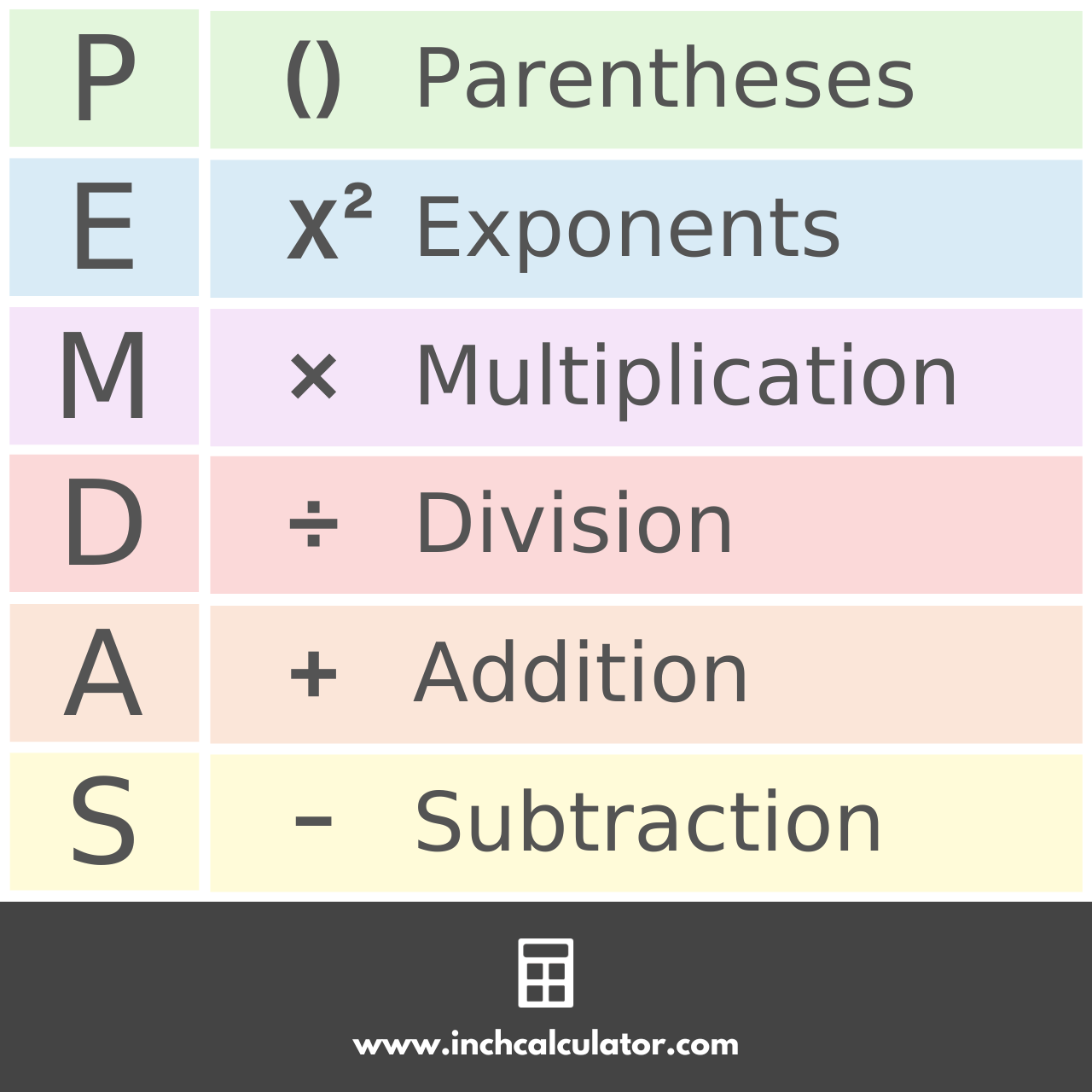Order of Operations Calculator – PEMDAS Solver
Use the PEMDAS calculator below to solve expressions using the order of operations.
Result:
Steps to Solve the Expression
(6+4)×3
Solve Within the Parentheses
= (10)×3
Solve the Remaining Expression
= 30
On this page:
How to Solve Equations Using the Order of Operations
The order of operations is a set of rules that dictates the sequence in which mathematical operations should be performed in an equation to ensure consistency and accuracy.
The order of operations follows a structured approach:
- Parentheses, Brackets, and Braces – Solve expressions inside parentheses (), brackets [], and braces {} first. Work from the innermost grouping outward.
- Exponents and Square Roots – Compute exponents (powers) and square roots next.
- Multiplication and Division – Multiply and divide from left to right.
- Addition and Subtraction – Finally, add and subtract from left to right.
This sequence ensures that everyone solving a mathematical expression arrives at the same answer.
Helpful Acronyms
Several acronyms help students remember the order of operations. Although they vary slightly by region, they all convey the same fundamental rules:

- PEMDAS (Parentheses, Exponents, Multiplication, Division, Addition, Subtraction) – Commonly used in the United States. It is often remembered by the phrase “Please Excuse My Dear Aunt Sally.”
- BODMAS (Brackets, Orders, Division, Multiplication, Addition, Subtraction) – Used in the United Kingdom and other regions. “Orders” refers to exponents and roots.
- BOMDAS (Brackets, Orders, Multiplication, Division, Addition, Subtraction) – A variation of BODMAS.
- BIDMAS (Brackets, Indices, Division, Multiplication, Addition, Subtraction) – Another variation, where “Indices” refers to exponents.
- BEDMAS (Brackets, Exponents, Division, Multiplication, Addition, Subtraction) – Commonly used in Canada.
While the acronyms may differ, the order remains the same, ensuring uniformity in mathematical calculations.
Following the Order of Operations on a Calculator
Modern scientific calculators follow the order of operations automatically. However, basic calculators often perform operations in the order they are entered, without prioritizing multiplication over addition, for example. When using a basic calculator, it is essential to use parentheses manually to ensure proper calculation.
For example, if you enter 5 + 3 × 2 into a basic calculator, it might incorrectly return 16, treating the operations sequentially.
On a scientific calculator, or when entered correctly using parentheses on a basic calculator (5 + (3 × 2)), the correct result of 11 is obtained.
To ensure accuracy, always use parentheses appropriately when using a calculator.
Example Problems
Example 1: Basic Order of Operations
Solve: 6 + 4 × 3
Step 1: Perform multiplication first: 4 × 3 = 12
Step 2: Add 6 + 12 = 18
Final Answer: 18
Example 2: Using Parentheses
Solve: (6 + 4) × 3
Step 1: Solve inside parentheses: (6 + 4) = 10
Step 2: Multiply: 10 × 3 = 30
Final Answer: 30
Example 3: Including Exponents
Solve: 3² + 8 ÷ 2
Step 1: Solve the exponent: 3² = 9
Step 2: Perform division: 8 ÷ 2 = 4
Step 3: Add: 9 + 4 = 13
Final Answer: 13
Example 4: Complex Expression
Solve: {[(8 + 2) × 5] ÷ 10} + 6
Step 1: Solve inside parentheses: (8 + 2) = 10
Step 2: Multiply: 10 × 5 = 50
Step 3: Divide: 50 ÷ 10 = 5
Step 4: Add 6: 5 + 6 = 11
Final Answer: 11

